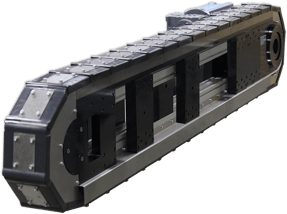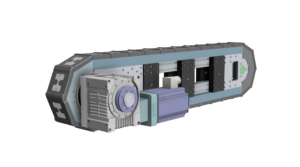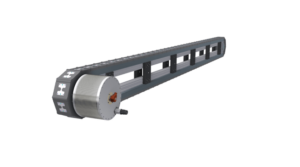Precision Conveyor Drive Options
No Comments - Leave a Comment
How important is it to commission programmable units correctly?
There are many ways to get to a specific indexing time when controlling a servo motor or AC motor with encoder. The most common mistake and the costliest is failing to adhere to manufacturers recommend movement profile. Over 95% of failures are due to extremely aggressive accelerations and/or decelerations programmed into drives when trying to get to a desired process time. Yes, this is industrial equipment, however, servo motors have tremendous amount of startup torque and sometimes very strong mechanical brakes. The amount of force on the mechanical components increases exponentially if done incorrectly. If you program a servo motor and drive to aggressively and put 5 times or more force than the system was sized for, there will be a premature failure.
Neglecting the manufactures recommendations on suggested movement profile can cause premature damage to the entire system. It is important to consult with the manufacture’s engineers on the recommended movement profile.
OPTIONS
Fixed mechanical Indexer
The fixed mechanical option would utilize a rotary cam indexer or a parallel cam indexer to achieve a predetermined linear stroke. The cam profile used in either type of indexer will provide a smooth acceleration and deceleration as well as a mechanical locking dwell at the end of the stroke. This option will allow you to operate the indexing conveyor with a simple VFD or contactors to control the motor. The VFD would be held at a constant Hz and be treated like a contactor. Commissioning time when using the fixed indexer for your operation will be the quickest and most cost-effective option. The limitation is that the system has pre-determine stroke that cannot be changed as it is controlled by the “Fixed” indexer unless you change to a more flexible option. If a change is required to go to a more flexible solution the entire chassis can be repurposed and a programmable transmission device can be installed in its place with a few minor changes to adapt the new programmable mechanism.

Servo Indexer
The similarity to the fixed indexer is that they both use “Zero Backlash” cam technology. The difference is the servo indexer uses a constant lead cam, absent of any modified sine profile that you will have in the fixed cam indexer. The benefit to this system it has flexibility to change the stroke length by changing the VFD program that is controlling the motor. With the cam system operating under pre-load conditions (cam and cam followers), the RT programmable series can achieve single digit arc seconds of accuracy. The RT series can be adapted to accept almost any type of servo motor brand or AC motor equipped with an absolute encoder. All the positioning with the programmable RT indexer is based on encoder counts, which relies on higher end drives to control the movement. Commissioning time and cost is based on how experienced the controls engineer is that will be performing this task.
Low Backlash Gear Reducer
The similarity between the servo indexer option and the low backlash gear reducer is that both need a servo motor or AC motor with brake to control the movement profile to achieve the necessary stroke between each process. Both can be adapted to accept most servo and AC motor brands. With bypassing the RT series servo indexer, you will be compromising some accuracy overall. Typically, the low backlash gear reducers used on these linear indexing systems have less than 1 arc minute of backlash and still maintain a very high accuracy. These low backlash gear reducers are used quite often on LFA linear precision conveyors that require flexibility. One major advantage over the RT servo cam indexer option is that higher indexing speeds can be achieved, because you do not have to go through a second reduction of the cam/cam follower mechanism. The RT series servo system can get much higher accuracy, but is limited on the RPM that the internal barrel cam can turn. Commissioning time is the same as what is experienced with the servo indexer option.
Direct Drive
A major advantage to using the direct drive option is the ability to achieve both really high accuracy and fast indexing speeds. The LFA precision conveyor systems can be equipped with dual direct drive motors to optimize the performance, mostly to achieve higher speeds. This option of direct drive system is the most expensive option of the four and most time consuming and difficulty to integrate. The direct drive system takes a very experienced controls engineer to implement and make sure it is operating correctly to not cause mechanical failures of the linear indexing system.
Comments
No Comments - Leave a Comment

 Translate
Translate

